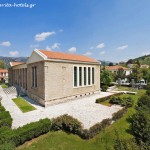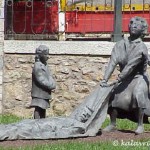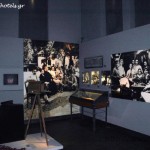Map
Photo gallery
The Holocaust Museum
The Elementary School of Kalavryta built in the early 20th century and began operating in 1906. It is a four-grade school with neoclassical architectural elements and specific typology. It is built according to the first state program of construction of school buildings which stood by the engineer of the Ministry of Education, Demetrius Kallias and institutionalized by law in 1895. From the first years of operation it have teachers for all classes and was equipped with teaching aids for the teaching of the historical, linguistic, technical and practical subjects. During the Occupation ceased operations. Used as a school only from September until December 1943. This was the shortest school year in long-term contribution to education.
On December 13th, 1943 burnt down by fire caused by the Germans. After the Liberation, the school was rebuilt according to its original architectural design. It reopened in 1955. In 1986, it was declared by the Ministry of Culture a national heritage monument and was designated as the building destined to house the Kalavrita Holocaust Municipal Museum.
The School of Kalavryta was one of the most spacious public buildings in the city with a large yard. During the period of occupation from 1941 until the end of April 1943, requisitioned by the Italians and became a political concentration camp prisoners in the Peloponnese. In this area remained prisoners five hundred Greek men and women. During the period of their confinement many people suffered hardships and some did not survive. In April 1943 the prisoners were transferred to other parts of the country and the military camp closed. Then the building was used as a military camping place of the Italian battalion Kalavryta. After the capitulation of the Italians, on September 9, 1943, the Elementary School reopened.
On the evening of October 17, 1943, after the battle of Rogon Kerpini, the rebels led to the school of German prisoners, who remained there for 24 hours.
The same area is part of the drama of Kalavryta on December 13th in 1943. There gathered the inhabitants of the city from the Germans and became the male population and adolescents over 13 years of the women and the elderly. While men were taken to the hill of Kappi, children, women and elderly were kept inside the building, which burned down.
In the state of panic inmates broke the doors and fled.
The Holocaust Museum
www.dmko.gr





